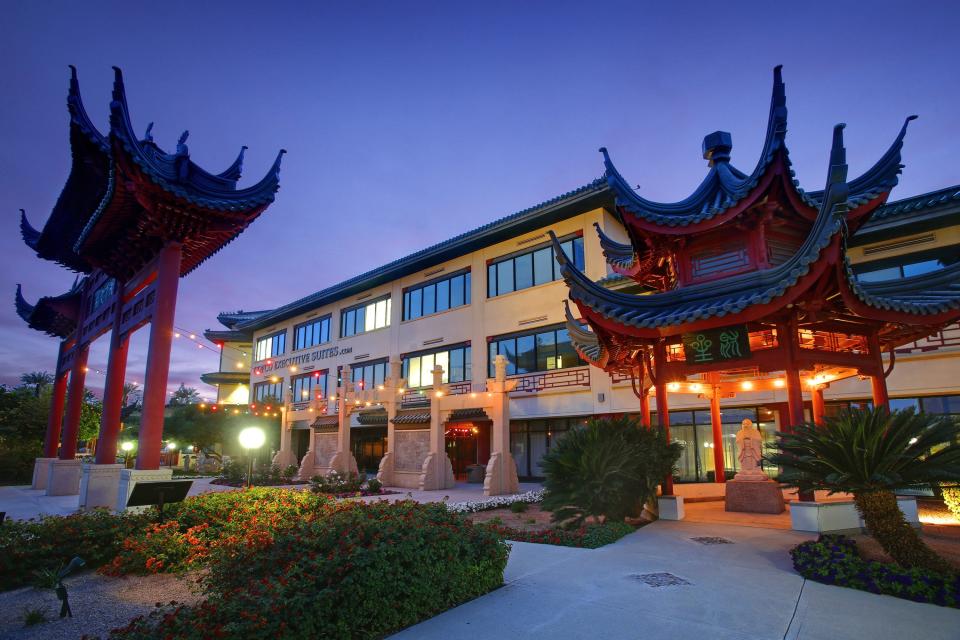Will Phoenix's new International District replace the Chinese Cultural Center?
Phoenix's recent designation of the area around the intersection of 19th Avenue and Camelback Road as an International District, similar to the Asian District in Mesa, has sparked interest and raised expectations among residents and merchants who see the potential for the area to become a successful Asian hub in Phoenix after the closure of the Chinese Cultural Center.
The anticipated International District is already home to several small Asian businesses, including a Chinese grocery market, a Vietnamese restaurant and a Japanese gift shop, as well as other businesses representing other parts of the globe.
Oh Makulsawatudom, from Thailand, has operated Thai Rama, a restaurant on Camelback near 13th Avenue, for more than two decades and expects the city's designation will boost business.
"Not only are there Asian businesses, but many Korean and Burmese residents also live in the apartments around here," she said. "We can have a unique Asian place like Mesa or Chandler. I anticipate our business will improve after the International District is established."

Rae Jansen, who grew up in the area, has been a staff member at Cutie Japan, a Japanese gift shop, since last October. "There was nothing like this before in the area. It's really nice to see all the cultures starting to emerge," Jansen said. "I hope the International District can positively impact our business."
Before the designation of the International District, the Chinese Cultural Center, which was located at 44th and Van Buren streets, served as a hub for Asian businesses, including an Asian grocery store, Chinese restaurants, a Japanese buffet, an Asian audio and video store and gift shops.
The Chinese Cultural Center was built in the late 1990s by BNU Corporation, a real estate firm and subsidiary of the China National Cereals, Oils, and Foodstuffs Corporation. A Chinese-themed retail complex, it featured a distinctive pagoda, roof, garden, and statues.
Despite litigation, protests and petitions by the Chinese community to preserve the Chinese Cultural Center, a new owner announced plans in 2017 to renovate the property, leading to the removal of all Chinese elements.
Andy Zhang used to be a community volunteer who participated in the effort to preserve the Chinese Cultural Center. "Not only did it feature iconic Chinese artworks, but over the years, it also hosted many cultural events. It was never officially named Chinatown, but for a time, it was like a de facto Chinatown," he recalled.
The Chinese Cultural Center has now been completely transformed into an office structure. Visitors entering the building are greeted by the reception desk of an investment group that purchased the complex for $10 million and relocated its headquarters there. Where the exterior of Super L Ranch Market once stood is now a large, unadorned white wall. The building's west wing serves as a clinic and café, accessible only to workers at the property.
Garry Ong, former president of the Chinese Restaurant Association, negotiated between the new owner and the Chinese community to save the Chinese Cultural Center. "The center isn't registered as a monument or heritage site. It doesn't really qualify as a culturally significant site worth preserving," Ong said.
Ong welcomed the International District as a way to support the Valley's cultural diversity.
"Having something like an International District is better than having nothing. It's good to establish it, but it's equally important to support it with the right kind of businesses to serve the community. That's the most important part," he said. "If they have a plan to develop it, I think it would be good. It will bring a lot more visibility to the Asian community. Definitely. We'll see what happens."
Seoka Hwang is a reporter for the Busan Daily News in South Korea. He's working with The Arizona Republic while on a Hubert H. Humphrey Fellowship at Arizona State University's Walter Cronkite School of Journalism and Mass Communication.
This article originally appeared on Arizona Republic: Will International District replace former Chinese Cultural Center?

